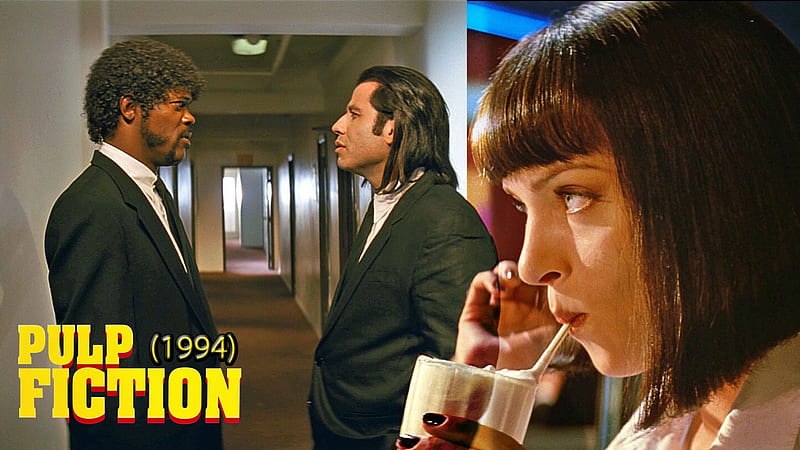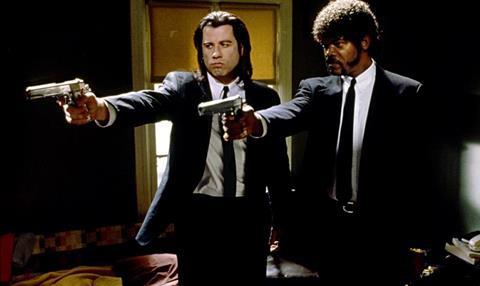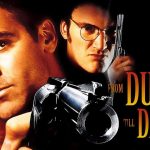Pulp Fiction (1994)

Directed by Quentin Tarantino and released in 1994, “Pulp Fiction” is a genre-defying film that has left an indelible mark on cinema history. Renowned for its non-linear narrative, eclectic characters, sharp dialogue, and cultural references, the film has become a quintessential example of postmodern filmmaking that challenges conventions and captivates audiences with its unique storytelling style.
The narrative of “Pulp Fiction” is intricately structured into several interwoven vignettes, each featuring disparate characters whose lives intersect in unexpected and often violent ways. The film opens with a diner hold-up and then unfolds through a series of nonlinear episodes involving hitmen Vincent Vega (played by John Travolta) and Jules Winnfield (played by Samuel L. Jackson), boxer Butch Coolidge (played by Bruce Willis), his wife Fabienne (played by Maria de Medeiros), crime boss Marsellus Wallace (played by Ving Rhames), and a host of other colorful characters.

Central to the film’s appeal is its witty and razor-sharp dialogue, which seamlessly blends pop culture references, philosophical musings, and profanity-laden banter. Tarantino’s screenplay, co-written with Roger Avary, is renowned for its clever wordplay, memorable one-liners (“Say ‘what’ again!”), and unexpected shifts in tone that oscillate between dark humor and profound introspection. The dialogue not only propels the narrative forward but also serves as a commentary on the absurdity and unpredictability of human existence.

Visually, “Pulp Fiction” is characterized by its stylized cinematography, vibrant settings, and meticulous attention to detail. The film’s retro aesthetic, from its eclectic soundtrack featuring surf rock and soul music to its nods to 1970s exploitation films, pays homage to Tarantino’s love for cinematic history while simultaneously subverting genre expectations. The use of long takes, unconventional camera angles, and iconic imagery (such as Vincent Vega’s dance scene or Jules Winnfield’s “Ezekiel 25:17” speech) contribute to the film’s lasting impact on visual storytelling.
Thematically, “Pulp Fiction” explores the themes of redemption, moral ambiguity, and the consequences of violence. The characters navigate a morally complex world where ethical boundaries are blurred, and decisions have far-reaching consequences. Vincent Vega’s existential crises, Jules Winnfield’s philosophical transformation, and Butch Coolidge’s quest for survival each offer insights into human frailty and resilience in the face of adversity.

Beyond its narrative and visual innovations, “Pulp Fiction” is celebrated for its ensemble cast and standout performances. John Travolta’s charismatic portrayal of Vincent Vega revitalized his career, while Samuel L. Jackson’s portrayal of Jules Winnfield became iconic for its blend of intensity and introspection. The supporting cast, including Uma Thurman as Mia Wallace, Harvey Keitel as The Wolf, and Christopher Walken in a memorable cameo, further enrich the film’s tapestry of characters and narratives.
In conclusion, “Pulp Fiction” remains a landmark achievement in cinema, revered for its bold storytelling, unforgettable characters, and cultural impact. Quentin Tarantino’s visionary direction and innovative approach to narrative structure have solidified the film’s place in cinematic history as a masterpiece of postmodern filmmaking that continues to captivate and inspire audiences worldwide.










